A Discussion with Dr. Stephen Bryen
by Jerry Gordon (August 2021)
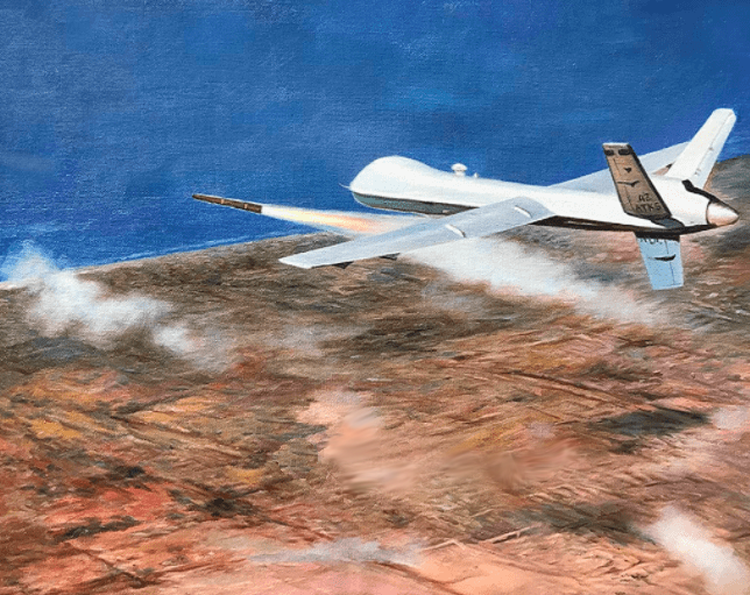
MQ9 Reaper over Sirte, Todd Krasovetz
Israel Aircraft Industries Heron Tactical Drone
In mid-July 2021, the Israel Defense Force -sponsored the first two-weeklong international Drone Exercise “Blue Guardian” with the US, UK, France, and Germany at the Palmachim air base in Israel. Jerry Gordon, a Senior Editor at The New English Review, and former producer/cohost of Israel News Talk Radio—Beyond the Matrix, discussed the significance of unmanned aerial vehicles (UAVs) drones in future wars with Dr. Stephen Bryen He is a renowned military technologist, former Pentagon Undersecretary for Technology and Security in the Reagan Era and columnist for the Asia Times.
Bryen addressed the evolution of global drone development by Israel from the early 1980s to 2021 creating military versions for intelligence, surveillance, reconnaissance, and armed missions. Israel Aircraft Industries and Elbit Systems now stand in the forefront in the 21st Century of development of both remotely piloted and autonomous drones.
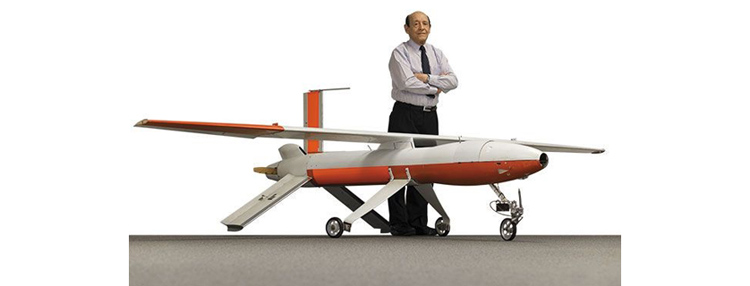
Abraham Karem Israeli designer of Predator UAV
The US company General Atomics, using designs by a former Israel Air Force designer Abraham Karem, created the long-endurance Predator and Reaper armed drones used by US military and CIA on special operations missions. US Companies like Lockheed Martin and Northrop Grumman developed intelligence and surveillance drones like the RQ-170 and the MQ-4 Global Hawk. Bryen reviewed the capabilities of significant international competitors from Europe, Turkey, Iran, China, and Russia
The discussion drew attention to recent conflicts in which drones have had a major impact. Among these are the 2011 downing by Iran of the RQ-170 in 2011 and the devastating Iranian drone and cruise missile attack on Saudi Arabia’s oil storage facilities in 2019. Bryen credits Israeli and Turkish drones as a major factor in the Azerbaijan victory in the 2020 war against the breakaway region of Nagorno-Karabakh and Armenia. Following the recent 11–day Gaza war pitting Israel’s Iron Dome rocket and missile defense system and combat aircraft against the onslaught of more than 4, 350 rockets launched from Gaza by Hamas and the Palestinian Islamic Jihad came new developments. Israel may have successfully managed a swarm of more than 50 drones in conducting precision attacks against targets in Gaza. Israel’s autonomous drone prowess in conducting this operation may have used advanced Artificial Intelligence techniques coupled with possible bult in intelligence and secure communications. If validated, that means Israel has a comprehensive defensive rocket and missile umbrella—the three-tiered Iron Dome, David Sling and Arrow anti-ABM systems and a possible autonomous drone offensive capability complementing the Israel Air Force fleet of F-15s, F-16s and F-35’s and attack helicopters.
 US interest in UAVs for military applications arose in the 1980s. Then, US Secretary of the Navy, John Lehman a colleague of Dr. Bryen (Right) was instrumental in procurement of the Israel designed Pioneer drone made by AAI in the US. During the 1991 Gulf War USS Battleships Missouri and Wisconsin used the Pioneer drones to target their massive 2,000-pound rounds of their 16-inch guns. Iraqi forces who had occupied a Kuwait island in the Persian Gulf actually surrendered to a Pioneer drone to ward off further attacks. After that, demand for drones like Pioneer soared in the US armed forces.
US interest in UAVs for military applications arose in the 1980s. Then, US Secretary of the Navy, John Lehman a colleague of Dr. Bryen (Right) was instrumental in procurement of the Israel designed Pioneer drone made by AAI in the US. During the 1991 Gulf War USS Battleships Missouri and Wisconsin used the Pioneer drones to target their massive 2,000-pound rounds of their 16-inch guns. Iraqi forces who had occupied a Kuwait island in the Persian Gulf actually surrendered to a Pioneer drone to ward off further attacks. After that, demand for drones like Pioneer soared in the US armed forces.
About the same time, a mutual friend of Dr. Bryen and Gordon, former US CIA director Jim Woolsey, investigated the Israeli-designed General Atomics Predator and remarked, “You need to build this, we’ll use it at the CIA. Maybe the Pentagon does not want it, but we want it.”
A colleague of Dr. Bryen and head of European defense technology firm Finmeccanica, Pier Francesco Guarguaglini, remarked, “Israel is really an interesting country. They make it in the garage and take it out the back door, and it goes to war.” It was a different approach and still is. You watch what the Israelis are doing, and they do it fast. It would typically take less than 2 years to develop Israel drones, versus over a decade in the US.
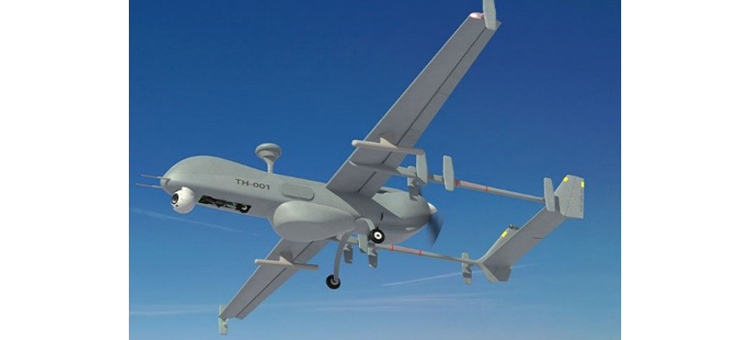
Israel Aircraft Industries Heron Tactical Drone
US and European UAV development is mired in a complex system of multi-service requirements, an institutional “NIH” —not invented here—bias, and a lack of urgency. Israel on the other has existential threats facing it from Iran and Middle East proxy terrorist groups Hezbollah, Hamas, Palestinian Islamic Jihad and Houthi rebels in Yemen. That was the motivation to make rapid improvements in military UVAS.
Here are some takeaways from recent Drone wars:
• The downing of the Lockheed RQ-170 strategic surveillance drone in 2011 by Iran, may have been facilitated by Russia was partially attributable to the lack of encrypted communications with controlling GPS satellites. It was reverse engineered by Iran copies of which were shot down by Israel.
• The US Navy version of the multi-million-dollar Northrop Grumman MQ-4 flying in orbit at 22,000 feet in the Persian Gulf in 2019 was destroyed in a missile attack by Iran.
• According to Israeli missile defense expert, Uzi Rubin the devastating Iranian attack against the Saudi Oil storage facilities near Riyadh may have been accomplished by fully autonomous drones that evaded detection by a network of European and US radar systems in Saudi Arabia. That complicates Israel’s ability to detect and destroy Iran drone sites in neighboring Syria, Lebanon, and Gaza.
• The Azerbaijan victory in the 2020 brief war with Nagorno-Karabakh and Armenia revealed the enormous power of Israeli and Turkish drones, especially the Bayraktar TB-2 equipped with laser guided MLM missiles, Israeli Elibit Systems Hermes 450 drones and Israel Aerospace Industries autonomous Harop Loitering Munitions. The use of drones called into question the wisdom of conventional Russian warfare fighting doctrine.
• The 2020 conflict in Libya between the Turkish-backed Islamist Tripoli government versus the Benghazi-based Libyan National Army of Field Marshal Hafter backed by UAE, Russia and Egypt showed the capabilities of Turkish Bayraktar TB-2 remotely piloted drones. They scored hits on several Russian supplied PantSir SA-2 air defense systems and forced the retreat of the Hafter LNA column near Tripoli.
• US and other militaries lack a significant deterrent capability against drones using Lasers, jamming and Vulcan -type gun systems . Moreover, the stealthy designs of drones makes it difficult to detect them.
• Dr. Bryen thinks that ultimate replacement of manned combat aircraft versus autonomous military UAV fleets will occur incrementally over time but is inevitable.
What follows is my discussion with Dr. Stephen Bryen.
Jerry Gordon: I am Jerry Gordon, Senior Editor at the New English Review, and formerly with the Israel News Talk Radio Beyond the Matrix program. I am here with long-term friend and guest, Dr. Stephen Bryen, renowned military technologist and former Pentagon Undersecretary for Technology and Security in the Reagan Era. The topic we are going to address today is timely. It is about Israel, US, Iran, Turkey, China, and Russia military applications of drones. How drones evolved and their emerging significant use in current and future conflicts. As we are holding this discussion, the Israel Defense Force is sponsoring the first international military drone exercise with NATO countries called Blue Guardian, hosted at the remote piloting base in Israel at Palmachim. Following the 11-day rocket war between Israel, Hamas, and Iran’s ally Palestinian Islamic Jihad there were news report of the IDF using swarms of drones to conduct precision attacks in Gaza. Steve, to start this discussion, let us go back to the beginning. How did drones evolve from target, intelligence, surveillance, and reconnaissance military applications to remotely piloted and autonomous unmanned combat aerial vehicles?
Stephen Bryen: Let us start with some terminology as your listeners may not grasp all these points. Drones have been around for an awfully long time. This is not something that just automatically happened. They have been around seemingly forever. However, the difficulty has been, how do you control them? How do you get back information from them ? The early ones carried film cameras, and they would take pictures and then they would fly back and either drop the canister onto the ground or they would land. That was clumsy and it was not timely. The distances involved were short because they did not have the capability to control them over long distances.
A lot of technology began to emerge in the 1970s with miniaturization of computers, cameras, and the introduction of GPS. GPS as an American idea was important. The US put up the GPS system around the world that made it possible to control a drone with precision, which is all important. You had GPS, you had much better communications and cameras. All these parts came together, and then if you take something like a model airplane with all these capabilities you had an unmanned vehicle.
The unmanned vehicles originally were not autonomous, because autonomy means that it can go off and do its mission without any connection back to a home base at all. That is particularly important for a drone that is going to carry out a strike with a rocket, missile or itself is a missile. Purely or fully autonomous drones are just now appearing in the market. This is the new development where drones do not communicate, except perhaps via GPS, but even that would be quite limited, and where they can do their job.
It looks like Iran now has autonomous drones as does Israel, the US, China, and others. However, that is still in the early stages. The very latest is adding artificial intelligence to the package which is growing in importance in combat. Originally drones were not so much thought of as a combat tool, as it was a surveillance and targeting tool. If you can see your threats and you can do it with some precision, you could direct your weapons and know them out.

Israeli-designed AAI RQ 2-A UAV used on USS Wisconsin during 1991
Gulf War on display at US National Air and Space Museum
In 1991, we did it from US Battleships Missouri and Wisconsin against an island that belonged to Kuwait in the Persian Gulf occupied by Iraqi forces who had invaded Kuwait. We used the Pioneer UAV, which is an Israeli design, but US built by AAI in Maryland. The Pioneer was a relatively simple drone with a two-cycle engine and a CCD or electronic digital camera. That enabled it to pick out targets for the 16-inch guns of the Missouri and Wisconsin., two great battleships that we had. We retired them about a year or two later. They were capable of delivering a 2000-pound shell on these targets. Can you imagine a 2000-pound shell coming down on your head on a small island?
Jerry Gordon: Those shells weighed more than a Volkswagen beetle at the time.
Stephen Bryen: Yes, I mean it was interesting back then the Wisconsin could fly a drone in at low altitude a few hundred feet above the ground, making a lot of noise with its two-cycle engines.
Jerry Gordon: Right.
Stephen Bryen: The Iraqi soldiers on the island did not want any more of those 2,000-pound shells falling on them so, they started to surrender to the drones. It was the first time in history that a military force surrendered to a drone. They were waving their handkerchiefs, in some cases, their underwear, whatever they could find to surrender to these drones, launched by the US Navy off these battleships, which were designed by the Israelis initially, which was quite a development.
Jerry Gordon: It was an important initial coup in drone war history.
Stephen Bryen: Yes, what the Israelis did, and the reason they are so important and remain dominant in this field. They were able to combine these technologies and put together a package that was quite effective. Especially in contrast to the US Air Force, Navy and US Army and other world militaries, that were very conservative and did not see the benefit of it. My friend, John Lehman, Reagan Secretary of the Navy, was the one who got these Pioneer drones on board the US Navy ships in the ’80s, he really was the leader in their introduction in the US military.
Lehman pushed it on the Navy, and the Navy found out that it was spectacular. Then once everyone saw that it worked very well and did its job, they all wanted these drones
However, the US military quibbled. They said, “Well, it never met its technical specs, it didn’t do this, it didn’t do that, and had this problem.” Yes, early drones did have lots of problems, but they worked. That tells you something about the mentality of how a small country like Israel goes about what it does, and the mentality of how a big country like the US with a huge industrial infrastructure, develops weapons. Because in the US military is mired in piling on more requirements and constant refinement of technology to the point that it takes 12 years to produce a weapon system, by which time it may or may not be effective.
In Israel, it takes two years, and they put it together with whatever they can find and get it in the air. My friend, Pier Francesco Guarguaglini, who was the head of defense firm Finmeccanica when I was at Finmeccanica, used to say, “Israel is really an interesting country. They make it in the garage and take it out the back door, and it goes to war.” It was a different approach and still is. You watch what the Israelis are doing it, and they do it fast…
Jerry Gordon: Those different dynamics that you just talked about, explains why companies like Israel Aircraft Industries, Elbit Systems, and what I consider as the American spin-off General Atomics have been so successful at developing drone applications, not only in Israel, but globally.

Israeli spin off General Atomics RQ-9 Reaper Drone
Stephen Bryen: General Atomics is a great company. I think the MQ-9 Predator drone, which evolved from some Israeli designs, really owes its success to Jim Woolsey who was then head of the CIA, because Jim saw the value of it, and he went to General Atomics and said, “You need to build this, we’ll use it at the CIA. Maybe the Pentagon does not want it, but we want it.” That is how it got started.
Jerry Gordon : All credit to the initiative of our mutual friend.
Stephen Bryen: Yes, it is nice to have good friends who made important decisions. Because Predators and successors, Reapers, have been hugely successful and important in both conventional and special operations. The point is these military drones are doing that at exceptionally long range with an operator in Nebraska controlling a drone through the satellites in Afghanistan and taking out some terrorist thousands of miles away. That is quite different from a little Pioneer, which could fly at best 100 miles. That places Predators or Reapers as quite different class of armed drone class, that is more strategic.
Jerry Gordon: Are there are other state actors who have emerged in the global drone market, such as Turkey, China, and Iran?
Stephen Bryen: Yes, also the Europeans.
Jerry Gordon: Right.
Stephen Bryen: The Europeans, have never been able to do as much as they potentially could do for a variety of reasons. They have their own way of going about things. They do not feel the pressure of combat the way the Israelis and others do. So, like the US, in Europe the timelines for development were stretched out. They have good defense industries, but there is nothing that propels them in any urgency to develop drones to meet threats in the field of combat.

Turkish Bayraktar TB-2 Drone
Now, when you talk about these other actors, who get into a new ball game that is emerging. Turkey’s Bayraktar TB-2 drones are hugely successful. They have a new two-engine turbojet-powered drone that is just becoming available. The Chinese have a whole range of drones, everything from commercial stuff that they sell to terrorists all the way up to military drones they sell to countries. The most important one that has seen combat is called Wing Loong that is a Predator copy but without the capabilities of the Predator. They have sold those to Saudi Arabia, UAE, Egypt, and several other countries. They are very busy in the Middle East, and Africa. The Chinese drones perform; however, they are not so reliable, and they require a lot of support, maybe more than they should, but they work.
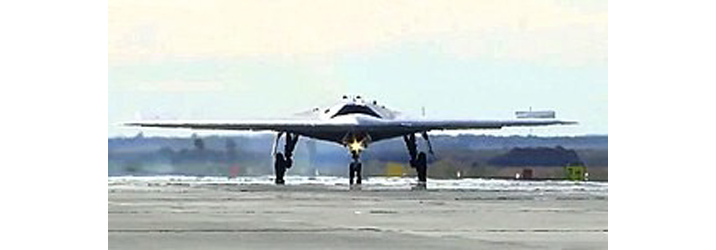
Russian Sukhoi-70 Okhotnik-B UCAV
Jerry Gordon: What is Russia doing at this point?
Stephen Bryen: Russia has been showing off a lot of different drone models, some of them strategic, some of them tactical military. However, we have not seen any of them in action anywhere. So, it is hard to evaluate whether they are any good. I think the Russians are behind in drone development. They did buy Israeli drones at one point to try and learn to jack up their capability. They were mainly interested in learning about how these things work. They have the capability, they have a quite good aerospace industry in Russia, they have access to all the technology that you need from China or from anywhere else.
The Chinese produce everything; the little engines, the cameras, the computers, it is all there. In fact, they are the largest producer of hobbyist and commercial drones for average people like you and me and for more serious use, for water conservation checking pipelines and supplies. Of the commercial drone business, the Chinese now have about 80% of the multi-billion-dollar global market. So, they will keep going.
Jerry Gordon: I wonder, for the benefit of our viewers and listeners, how you would divide up the groups of military drones in categories in terms of their capabilities? For example, we have high-altitude long endurance drones, medium altitude ones, etc. .
Stephen Bryen: That is one way to split them up, but I think you also must look at what are their capabilities. There are different categories. For example, there are surveillance drones which can do targeting, which is particularly useful. These come all the way down to little ones that can be launched from the hand of a combat soldier, all the way up the scale to those that can go thousands of miles. So, there is a huge range in there, but they are primarily surveillance.
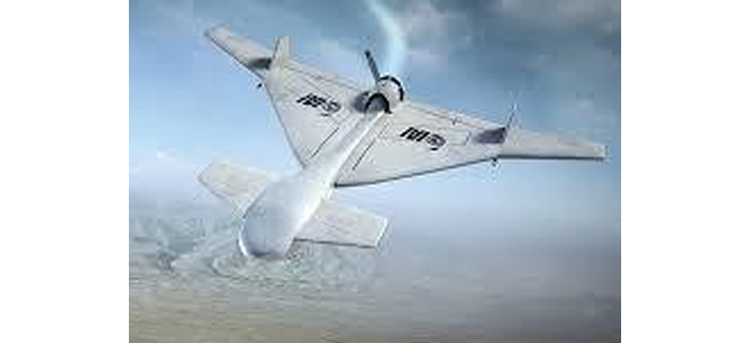 Israel Aircraft Industries Harop Loitering Munitions Drone
Israel Aircraft Industries Harop Loitering Munitions Drone
Now, if you stick a bomb on it plus the surveillance then you have a different kind of tool, because now not only can surveillance find something, but it can destroy it. Then you what are called suicide drones, and these are designed to smash into and destroy a target. A good example of that this Israel Aircraft Industries Harop, a so-called loitering munitions drone, the star of the show. It is amazing and effective, and proved itself in the Nagorno-Karabakh conflict where it was used primarily to take out the missile defense systems, radars, and command centers. They are launched from the field. It uses anti-radiation sensors. In other words, it looks for a hotspot, and flies to it and on command destroys it. You can see lots of videos of it in action in the Nagorno-Karabakh conflict which are available on YouTube. If you view those videos, you will see two different kinds of things. You will see videos of drones shooting off small missiles and destroying targets. Those are primarily the Turkish drones. Then you see where the Harop heading toward a radar tower or similar target and hear noise because it exploded and there is no more picture. Those are Harops munitions suicide-type drones.
The Harop is interesting for many reasons. First, it can pinpoint these radiation-type targets and take them out. Secondly, it is very stealthy. It is the only drone the Israelis make, in my opinion, that is actually stealthy by design. Some of the others are stealthy-ish, because they are small, made of plastic and are hard to pick up on radar. That is true of almost all small drones.
The Harop is designed to be stealthy. The engine is put up on top so it does not have a heat signature that can be picked up from the ground. Its body is composite. It is a very well thought thoroughly capable drone. The Iranians are copying something like that now that they used against Saudi Arabia recently. However, we do not know a whole lot about that drone, except that it seems to be autonomous. If we believe the experts who say it maybe autonomous.
Remember that when they hit those oil installations in Saudi Arabia, you saw all those pictures of those big storage tanks lined up and each one had a hole in it precisely at the same height. The argument is that it was a fully autonomous drone because it was too far away from Iran, or for that matter, from Yemen. It was too far away to be able to send a real-time signal from the controllers sitting in a control booth somewhere to aim it and put it right on that target. It must have had some kind of scene matching technology built into it to put it right there. That is according to the experts. I have always suspected that they had somebody on the ground near those oil fields or even in the oil fields, controlling those drones. That is my personal belief which has never been proven. No one can prove anything, because the drones destroyed themselves, so you really do not know.
Jerry Gordon: Was that a breakthrough capability by the Iranians?
Stephen Bryen: If, in fact, it was fully autonomous with scene matching, the answer is absolutely, yes. Of course, that deeply concerns the Israelis, because they feel the Iranians are a direct threat to them, and that they might supply these kinds of things to Hezbollah or to Hamas or do it themselves. Look, it was an interesting attack in Saudi Arabia, because the Iranians did it themselves. By the way, the Saudis never retaliated and did nothing, zero. They did not want to have a war with Iran, because they figured they would lose it.
Jerry Gordon : These Iranian drones were effectively flying underneath the radar?
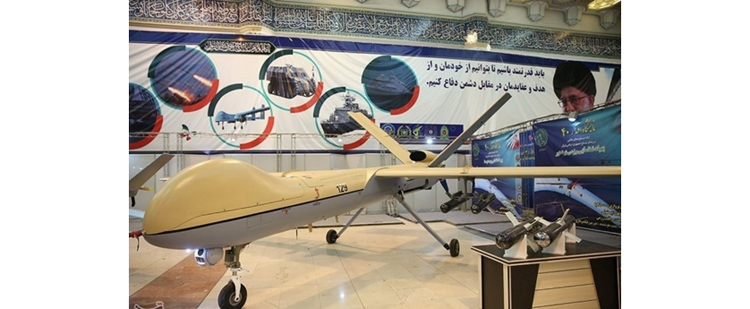
Iranian Shahed 129 Drone
Stephen Bryen: That is the other issue. There were a lot of air defense radars around those oil fields, French, American and Swiss. A US manned Patriot battery was there. None of them responded to these incoming Iranian drones, zero. They just sat there. That raises a host of questions. Israeli missile expert Uzi Rubin says that maybe those radar systems had bad operators. However, the Patriot battery would have been operated by us, and we are not bad operators. Perhaps all these air defense systems have difficulties picking up small drones if they are made from composite materials.
Jerry Gordon: How could that occur?
Stephen Bryen: I think if you look at the Nagorno-Karabakh drone war. Very few drones were shot down by the Armenians. They took a hell of a beating from both the Turkish and Israeli drones. They lost a lot of men. You see videos of men running away from these drones and then getting blown up, it is awful to see. The fact of the matter is that they had no defense against them. They did not know the drones were coming until the last minute. Then when they heard them, you were within a few seconds before the drone could hit you, The Turkish drone, the Bayarktar carries something called a MAM-L Munition made by Roketsan in Turkey. The MAM-L Munition is steered by a laser spotter that in the Bayarktar. You can see the flashing of the laser on the targets in the Nagorno-Karabakh Azerbaijan YouTube videos.

Turkish STM Loitering Munitions Drone
Jerry Gordon: Interesting.
Stephen Bryen: You’ll see the boom, the explosion, and the bodies flying. I mean, it is tremendously effective and quite lethal.
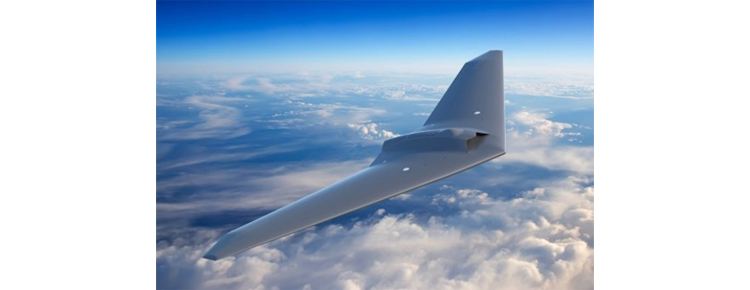 Lockheed Martin RQ-170
Lockheed Martin RQ-170
Jerry Gordon: Keying off the comments about the Iranian development of stealthy “drones and/or cruise missiles,” back in 2011 and again in 2019, they was successful in bringing down the Lockheed Martin RQ-170 and they also brought down the MQ-4 Global Hawk surveillance drone.
Stephen Bryen: I think they destroyed the MQ-4 drone.
Jerry Gordon: Yes, they did.
The RQ-170 is more interesting, because there are different stories about how this happened. It looks like they were able to get control of it and land it on an Iranian airfield. It broke a wing, and they smashed the underside, but they got it on the ground, and it was not destroyed. How did they do that? That is an interesting question. I think what they did was they got control of these drones as they were controlled by a remote center through a satellite. They were able to put over that their own controlling technology. They or somebody figured it out for them. They mimicked the commands to grab control of that aircraft and bring it in to their airfield. I think the Russians were deeply involved in that, because the Russians wanted to get their hands on a lot of technology in there as it was a sophisticated machine. Unfortunately for us, it appears that the command-and-control data link back between the satellite and the remote controller, was not encrypted. Since it was not encrypted, it was easy, once you could intercept in other places where the Russians were able to figure out the commands and how to control these platforms, they passed that to the Iranians. Perhaps it may have been the Russians who brought it in, not the Iranians themselves. We do not know. Of course, the Iranians took full credit for the whole episode.
.png)
Northop Grumman MQ-4 US Navy Global Hawk
Jerry Gordon: In the case of the MQ-4 Global Hawk, it was downed by the Iranians. Was that because they had the requisite missiles to take it out, or was it the fact that the Global Hawk was flying at a lower altitude, 22, 000 feet?
Stephen Bryen: It was flying on an orbit, so they could watch it.
Jerry Gordon: Aha. So, it was orbiting the conflict zone.
Stephen Bryen: Yes. I think it was. There is an argument about where it was, whether it was over Iranian airspace or whether it was over international airspace. Regardless of what was said, the Iranians successfully destroyed it. I think the more devastating episode was the 2011, downing of the RQ-170 as they copied it.
Jerry Gordon: Yes.
Stephen Bryen: The Israelis have since shot down a couple of the Iran copies of the RQ-170.
Probably from Hezbollah, but in fact not. The Iranians are embedded in Lebanon and in Syria. Unfortunately, much of the technology especially the hardware is now available globally. You can buy the engines, cameras, and lasers. . Even the Turkish Bayarktar uses a Rotax engine from Austria that was owned by Bombardier in Canada. They used the camera from L3 WESCAM in Canada. It was more than a camera. It is a whole complex of infrared, laser and daylight and night-time and targeting. It is a very sophisticated camera, which was not something the Turks had. They bought it from the Canadian subsidiary of the American parent company, L3. WESCAM is part of L3 in Canada. Turkey bought these as it is a NATO country and not prohibited. During the Nagorno-Karabakh conflict, the Canadians got religious and cut off sales of the cameras and the engines. However, by then that did not matter. Now the Turks are going to make their own cameras, copies of which probably they are getting help from some European or other companies.
Jerry Gordon. Turkish drones, which we cited before, and you expressed a view that they have significant capabilities, are involved in a stand-off in Libya against Chinese drones supplied by the UAE.
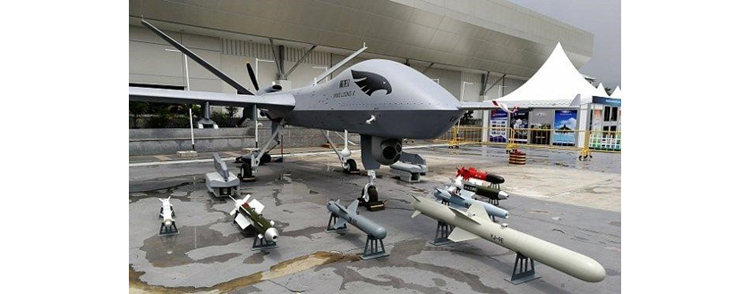
Chinese Wing Loong copy of US Predator drone
Stephen Bryen: Yes, that is right. The UAE which favors Field Marshal Haftar of the Libyan National Army on Benghazi side of the argument, not the Islamist Tripoli side, have supported him with Chinese Wing Loong drones, and with aircraft support as well. On the Tripoli side, which is supported by Turkey, among others, have been using the Bayraktar. The Turks say they were able to knock out several Russian Pantsir SA-2 air defense systems. They caught one in the open driving on a road. They were not in a combat position; they were being moved when the Turks knocked that one out. The other one they took out was in a hangar at an airfield. That one was in good enough shape that they dragged it into Tripoli and put it on parade to show how successful they were. Yes, the Turks did well. However, those drone attacks were not at the dramatic level or comparable to what we saw in the Nagorno-Karabakh conflict. Nagorno-Karabakh, I think was the first time that an army was at least 60% defeated by drones.
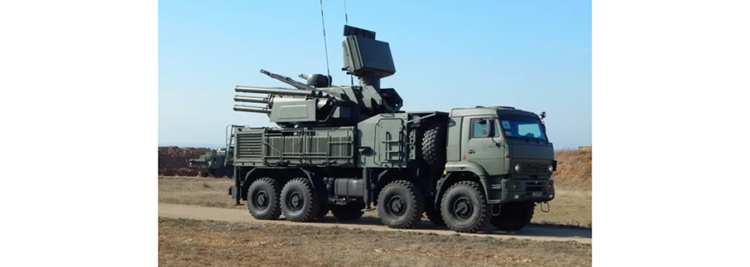
Russian Pantsair SA-2 Missile and gun mobile air defense system
Jerry Gordon: That is an important revelation. It goes along with the Iranian breakthrough in terms of attacking those Saudi oil storage facilities.
Stephen Bryen: The Saudi episode with Iran was different. When we talk about Nagorno-Karabakh, what it says is conventional armed forces tactics, which is what the Armenians used. It says that Russian tactics do not work anymore. They are sitting ducks. You must have systems that can knock out these drones or you lose. It is that simple. They did not have them in the Nagorno-Karabakh episode. They never were successful.
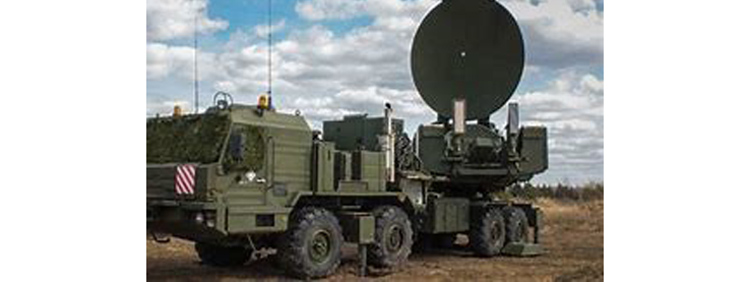
Russian “Belladona” Drone Jammer
Stephen Bryen: The Russians brought in two jammers, one of which was called Repellent. Sounds like something you put on to kill mosquitoes. Unfortunately, Repellent did not repel, and it was knocked out by one of the Israeli Harop’s. Then the Russians brought in a drone called Krasukha which means belladonna in English. The Russians kept that one far back.in Armenian territory, not the disputed Nagorno-Karabakh territory. Apparently, the Azerbaijanis sent some Bayraktars against it and they jammed them successfully and made them crash. That raises another important question about the ability of jammers to defeat any kind of communication, either control communications or GPS. The Russians claimed that they were phenomenally successful with this machine. Perhaps. I am not sure. It was down to the last weeks of the war, and the Azerbaijanis did not send any Harops up against it because it was too far into Armenian territory.
There is another feature I wanted to mention in this context which is not well understood. When you look at the video of the Bayraktar releasing its missiles on targets in Nagorno-Karabakh, there is clearly a third camera taking these pictures of the missiles are hitting targets. That camera was not on the Turkish Bayraktar. I think it was on one of the Israeli big surveillance drones like the Hermes 450. I think that they had worked out some system, that the actual target identification was first being done by the surveillance drone handing off to the Bayraktar that was then firing at the targets, which was clever. If I am right then that indicates that despite the Turkish and Israeli issues at least in this instance, they were cooperating and had worked out a system that seemed to be highly effective.
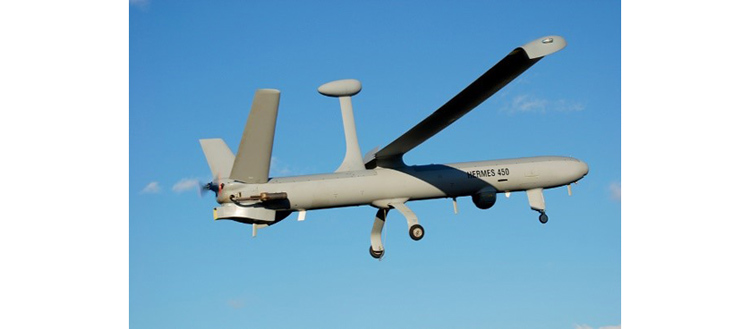
Israeli Elbit Systems Hermes 450 drone
Jerry Gordon: Which leads me to the revelations regarding the recent 11-day rocket war between Hamas, PIJ, and Israel. Allegedly, swarms of drones were involved in probably targeting and other actions.
Stephen Bryen: Yes. We do not know a whole lot about it yet. The Israelis are not going to tell us as it is a classified program using artificial intelligence to control many drones, 50 plus, hovering over Gaza. That is a large number.
Jerry Gordon: Yes.
Stephen Bryen: Those drones had responsibility for specific squares on the map where they were surveilling. However, it seems like it was more than that because not only did they have these things coordinated, but they had intelligence in the drone that was able to pick out targets. Which meant there was scene-matching and other kinds of artificial intelligence that were telling them, “Oh, that’s a rocket. Take it out.” Okay. “Well, that’s a launch site. Take it out. Well, that is a civilian. Don’t take it out, leave it alone.” That is a very sophisticated capability of identifying targets. With that many drones, you need to do it automatically. It must be done with sophisticated artificial intelligence. Artificial intelligence is becoming a major problem for air defense systems around the world. I think the Chinese, the Russians, the NATO countries, and the US are working on it. It is an important capability that is going to have increasing impact in future.
Jerry Gordon: Doesn’t it require a lot of compute power to develop those algorithms and secure communication nets?
Stephen Bryen: Yes, it does. I will give you an example of something you can see today domestically in the US or elsewhere. I have written books about protecting religious places. One of the things you can do with a camera, is if you are holding a gun or even have one under your coat, you can teach a camera, with some software to know that. Before anyone sees the person, I could also alert the guards, “The guy coming with a blue shirt and glasses, bad guy, and you better stop him. He’s got a gun under his shirt.” I can do that all automatically, all by AI and all in the camera, or at least in the PC computer controlling the camera. The access or accessibility of artificial intelligence-driven solutions is growing, and you can buy that, it is available today. Several companies have this, these algorithms and will happily sell it to you. If we can protect a church or synagogue, the militaries can do it. It is a piece of cake, right? I am looking for a missile or a launch site, I can now figure out what it is, automatically.
Jerry Gordon: That also brings up the question of where we go from here? Because as we both know, Russia and China are developing what I would consider as autonomous unmanned combat vehicles tests.
Stephen Bryen: Yes, this takes away a capability that the US and others, even the Russians have the “belladonna” machine. AI autonomy in drones takes away jamming. You cannot jam something that is not communicating.
Jerry Gordon: Correct.
Stephen Bryen: It puts in place scene matching capability with artificial intelligence. If, in fact, that is what they have. However, it appears they may have it. To do that, you must do extensive surveillance ahead of time, if you are going against fixed targets like an oil tank, a command center or Ministry of Defense or other strategic targets. Now, if you are talking about countries where these capabilities are developing. I do not think the Iranians have it. That is what the Israelis appear to have with this drone swarm attack in Gaza.
Jerry Gordon Do you believe that was demonstrated in the recent conflict?
Stephen Bryen: I suspect it was. Because the Israeli military censor put out a teaser. They did not tell us what they really did. It is not possible to have something like that operating and be useful, unless the IDF has those capabilities. If you start there, then the logic says they have it, and they did a very credible job given the threat to them, both in offense and defense. They had Iron Dome, that was extremely effective on the defense. They had this secure autonomous drone swarm on the offense in Gaza along with other systems. Yes, difficult though it was, how many rockets and missiles did Hamas and the Palestinian Islamic Jihad launch, 4000?
Jerry Gordon: 4,350 of which less than 50 got through.
Stephen Bryen: Especially, when you have large numbers launched from schools, mosques, apartment buildings. The trade-off is you do not want to kill civilians, when terrorists use them as hostages. That is the dilemma of allowing Gaza to function under Hamas’s control. I think we are nearing the point where the Israelis, may have to go in and take it over.
Jerry Gordon: Physically?
Stephen Bryen: I do not see any way of stopping these attacks in future. You cannot seal the place off, because Israel and Egypt have not been able to do that. I think that the Hezbollah will present other threats to make it more complex. There is a point you reach where you cannot do it anymore. Where you move from tactical to existential problems. I think if you reach an existential problem, then the Israeli leaders would have no choice but to send the army in, which is terrible.
Jerry Gordon: It is ironic you should be speaking this way because this is the 16th anniversary of the evacuation of 10,000 from two Gush Katif settlements in Gaza under the pretext of becoming more secure.
Stephen Bryen: Yes, I visited Gush Katif, when it was still there before the withdrawal had been announced was going to take place, and the communities had to leave. Neither of these kinds of solutions is desirable. It is not desirable to continually shoot down these rockets and missiles every time. It is not desirable to have to send in the army. Because what do you do next occupy it? Not desirable, in fact far from it. It is a lousy choice.
Jerry Gordon: Getting back to drone developments, what are the significant, if any, countermeasures to deal with drones?
Stephen Bryen: Jammers for last generation drones because those drones need communications, and a person in the loop to operate them. You can block their communications, and you can bring down the drones. That is one way to do it. You can make them crash, so jammers are one option. Then you must improve radars, because current day radars cannot detect drones very well if they see them at all. Clearly, you need to improve radars. Everyone is looking at all kinds of other solutions to deal with them including lasers, nets that they can release in the air to catch drones. None of them strike me as effective enough to be worth the time and effort. Other than improving the radars, I think we may be going back to gun-type technology. The US is trying to do it with the C-RAM in Iraq, for example, which is a Vulcan gun, firing thousands of rounds a second. I do not like it, because it does not see the threat very well, These C-RAM systems have been firing at small rockets. I think some better gun system may be a cheaper way to go if it can be made effective for the fragmentation shell, which is what the C-RAM coupled with a much better radar may be, a practical solution to protect at least certain areas. The problem is guns are short range, so you cannot protect wide areas. You are not going to see drones until they are close. I think the drone threat is like the rocket threat from Gaza, you may have to go to the launch site and destroy it, which is what the Israelis have been trying to do in Syria.
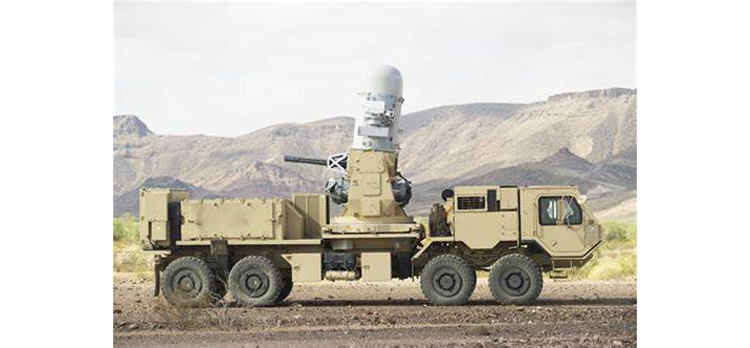
US C-RAM Vulcan gun system
Jerry Gordon: The final question for this fascinating discussion is, do you see a future for manned, piloted air fleets, given these rapid developments of drones?
Stephen Bryen: This is a great question, I am not really the person you should be talking to, but to the Air Force and Navy. They are still for piloted aircraft . Some people think that F-35 is the last piloted aircraft we are going to see. Yet, they are working on a follow-on sixth generation, whatever that is, because they want to keep the airspace industry active otherwise it does not have something to work on. I think that the presence of drones in our military air fleet will increase incrementally rather than dramatically. Incrementally, taking on the role that aircraft used to perform. They are still missing a particularly good ground attack capability compared to , for example, the A-10. However, I think over time it could become a highly effective close air support weapon system. You will need a large number of them. They will have to be a lot better than they are today, more accurate, but you can do it. I think incrementally, we are going to see various kinds of drones playing a greater role. I think those will have to be autonomous to be unjammable, so they cannot be defeated. That is what the Israelis may have been demonstrating with drone swarms over Gaza in 2021.
Jerry Gordon: You may well be correct. Only time will confirm that was the case.
Stephen Bryen: those Israeli drones were probably autonomous such that they would be extremely hard to jam. I do not know that for sure, because the IDF have not very forthcoming, but it sounds like it.
Jerry Gordon: Steve, I want to thank you for a fascinating and highly enlightening discussion about, “The Drone Wars”.
Stephen Bryen: Ye, more of them in the future, I am afraid.
Jerry Gordon: I would agree, having had this conversation. I think this has been a timely and important discussion, that should have an airing, particularly on the policy side.
Stephen Bryen: Yes, I agree with you. I think that the policy is always slow to catch up with technology.
Jerry Gordon: Absolutely.
Stephen Bryen: Now we are reaching the point where we know enough now. We are challenged enough I think, or we should be, before it is too late, as we have trouble in Asia, the Middle East, and other conflict zones around the world. I would say Asia is the most dangerous, right now, and we must be prepared.
Jerry Gordon: Again, thanks very much, Steve.
Stephen Bryen: My pleasure. Take care, Jerry.
Jerry Gordon: You, too.
Watch the discussion with Dr. Stephen Bryen in this YouTube video..
____________________________
Jerry Gordon is a Senior Editor at New English Review and Producer and former co-host of Israel News Talk Radio – Beyond the Matrix.
Follow NER on Twitter @NERIconoclast
- Like
- Digg
- Del
- Tumblr
- VKontakte
- Buffer
- Love This
- Odnoklassniki
- Meneame
- Blogger
- Amazon
- Yahoo Mail
- Gmail
- AOL
- Newsvine
- HackerNews
- Evernote
- MySpace
- Mail.ru
- Viadeo
- Line
- Comments
- Yummly
- SMS
- Viber
- Telegram
- Subscribe
- Skype
- Facebook Messenger
- Kakao
- LiveJournal
- Yammer
- Edgar
- Fintel
- Mix
- Instapaper
- Copy Link








